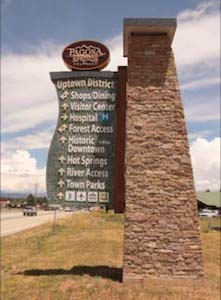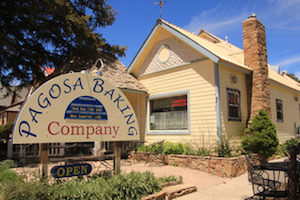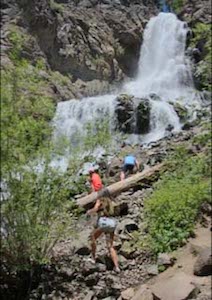By John Egan

The springs have a long and complicated history. The “breath of the earth,” as Native Americans once thought of them, have been here for millennia and their curative powers are said by some to heal almost any malady. The sacred springs were so important to the Native Americans that battles between two competing tribes, the Southern Ute Indians and the Navajos, ended in an historic duel between American Army Colonel Albert Pfeiffer and a Navajo warrior to determine the ownership of the “pagosa” (healing waters) once and for all. The Navajo brave lost that fight, and since that time in the 1870s Pagosa Springs has changed from a Cavalry outpost (Fort Lewis) to a logging center and ranching community, and now it is a tourism destination where healing arts like massage and aromatherapy flourish, complementing the relaxing nature of the hot springs.

Today Pagosa Springs draws visitors from around the world, but the nurturing hot springs aren’t the town’s only attraction. Nestled in the South San Juan Mountains travelers to this small mountain town can poke around inviting local shops, art galleries, and antique shops tucked along downtown streets. During the summer kids scurry from one end of Pagosa Springs to the other, plopping their inner tubes in the waters of the San Juan River and floating through the heart of town. This ritual is repeated hundreds of times each day. Diners relax on shade-covered patios or in dining gardens, experiencing delicious local fare; beer aficionados quaff icy cold local brews paired with enticing and plentiful pub food.

In the fall and spring hunters from around the country descend on Pagosa Springs, and why not? With deer, elk, bear, and turkey seasons for bow, black powder, and rifle hunting, the area is a hunter’s paradise. And there’s plenty to do for those who elect to forego the hunting experience in favor of good food, a hot shower, and a warm, comfortable bed.
In the winter it’s skiing that brings people to Pagosa Springs. The legendary Wolf Creek Ski Area is often the earliest skiing and snowboarding area in the U.S. to open. (Remember the ’70s song “Wolf Creek Pass” by country singer C. W. McCall? Well, that’s just where the ski area is.) It is arguably the best powder snow in Colorado. Likewise, Nordic skiing is breathtakingly beautiful on groomed trails through pristine, snowy, backcountry woods.

There is no dearth of sightseeing opportunities. Locally or within easy driving distance there is hot air ballooning, the Rio Grande and Silverton Railroad just 60 miles to the west, a thrilling drive on the Million Dollar Highway to Silverton, guided adventure tours to ghost towns like Summitville, or a visit to the Southern Ute Indian Reservation and the impressive Sky Ute Casino.
Unspoiled and authentically refreshing Pagosa Springs, Colorado, is truly a visitor’s paradise for all seasons.
If you would like to purchase this article for your publication, please click here to contact the author directly.

